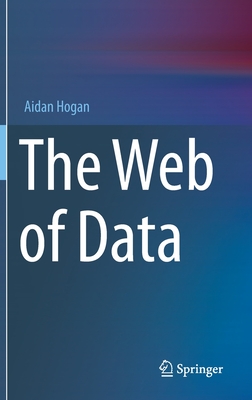Exploring Graphs with Elixir: Connect Data with Native Graph Libraries and Graph Databases
暫譯: 使用 Elixir 探索圖形:連接數據與原生圖形庫和圖形數據庫
Hammond, Tony
- 出版商: Pragmatic Bookshelf
- 出版日期: 2022-12-06
- 售價: $1,700
- 貴賓價: 9.5 折 $1,615
- 語言: 英文
- 頁數: 300
- 裝訂: Quality Paper - also called trade paper
- ISBN: 1680508407
- ISBN-13: 9781680508406
-
相關分類:
Functional-programming、資料庫
立即出貨 (庫存 < 3)
相關主題
商品描述
Data is everywhere - it's just not very well connected, which makes it super hard to relate dataset to dataset. Using graphs as the underlying glue, you can readily join data together and create navigation paths across diverse sets of data. Add Elixir, with its awesome power of concurrency, and you'll soon be mastering data networks. Learn how different graph models can be accessed and used from within Elixir and how you can build a robust semantics overlay on top of graph data structures. We'll start from the basics and examine the main graph paradigms. Get ready to embrace the world of connected data!
Graphs provide an intuitive and highly flexible means for organizing and querying huge amounts of loosely coupled data items. These data networks, or graphs in math speak, are typically stored and queried using graph databases. Elixir, with its noted support for fault tolerance and concurrency, stands out as a language eminently suited to processing sparsely connected and distributed datasets.
Using Elixir and graph-aware packages in the Elixir ecosystem, you'll easily be able to fit your data to graphs and networks, and gain new information insights. Build a testbed app for comparing native graph data with external graph databases. Develop a set of applications under a single umbrella app to drill down into graph structures. Build graph models in Elixir, and query graph databases of various stripes - using Cypher and Gremlin with property graphs and SPARQL with RDF graphs. Transform data from one graph modeling regime to another. Understand why property graphs are especially good at graph traversal problems, while RDF graphs shine at integrating different semantic models and can scale up to web proportions.
Harness the outstanding power of concurrent processing in Elixir to work with distributed graph datasets and manage data at scale.
What You Need:
To follow along with the book, you should have Elixir 1.10+ installed. The book will guide you through setting up an umbrella application for a graph testbed using a variety of graph databases for which Java SDK 8+ is generally required. Instructions for installing the graph databases are given in an appendix.
商品描述(中文翻譯)
資料無處不在,但它們之間的連結並不良好,這使得將資料集彼此關聯變得非常困難。利用圖形作為基礎的粘合劑,您可以輕鬆地將資料結合在一起,並在不同的資料集之間創建導航路徑。加入 Elixir,憑藉其卓越的並發處理能力,您將很快掌握資料網絡。學習如何從 Elixir 中訪問和使用不同的圖形模型,以及如何在圖形資料結構上構建穩健的語義覆蓋。我們將從基礎開始,檢視主要的圖形範式。準備好迎接連接資料的世界吧!
圖形提供了一種直觀且高度靈活的方式來組織和查詢大量鬆散耦合的資料項目。這些資料網絡,或在數學中稱為圖形,通常使用圖形資料庫進行存儲和查詢。Elixir 以其對容錯和並發的卓越支持,成為處理稀疏連接和分散資料集的理想語言。
使用 Elixir 及其生態系統中的圖形感知套件,您將能輕鬆地將資料適配到圖形和網絡中,並獲得新的資訊洞察。構建一個測試應用程式,以比較本地圖形資料與外部圖形資料庫。在一個統一的應用程式下開發一組應用程式,以深入探討圖形結構。在 Elixir 中構建圖形模型,並查詢各種圖形資料庫 - 使用 Cypher 和 Gremlin 來處理屬性圖,使用 SPARQL 來處理 RDF 圖。將資料從一種圖形建模範式轉換到另一種。了解為什麼屬性圖在圖形遍歷問題上特別出色,而 RDF 圖在整合不同語義模型方面表現優異,並且可以擴展到網絡規模。
利用 Elixir 中卓越的並發處理能力,處理分散的圖形資料集並管理大規模資料。
您需要的內容:
要跟隨本書,您應該安裝 Elixir 1.10 以上版本。本書將指導您設置一個圖形測試平台的統一應用程式,使用多種圖形資料庫,這些資料庫通常需要 Java SDK 8 以上版本。安裝圖形資料庫的說明在附錄中提供。
作者簡介
Tony Hammond is a longtime data professional with a wide experience of linked data architecture, public identifier management, and knowledge representation and engineering. He has worked on both sides of the information supply chain, from international research centers to leading academic publishers, and more recently is employed in the financial sector. He is especially interested in using graph databases and ontologies to build out integrated systems over distributed datasets.
作者簡介(中文翻譯)
Tony Hammond 是一位資深的數據專業人士,擁有豐富的連結數據架構、公共識別符管理以及知識表徵和工程的經驗。他曾在信息供應鏈的兩端工作,從國際研究中心到領先的學術出版商,最近則在金融領域工作。他特別對使用圖形數據庫和本體論來構建分散數據集上的整合系統感興趣。



















